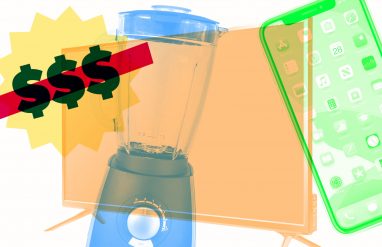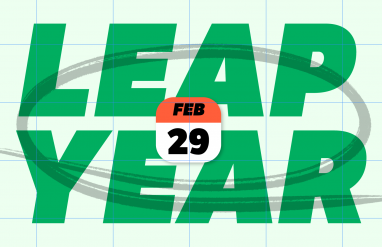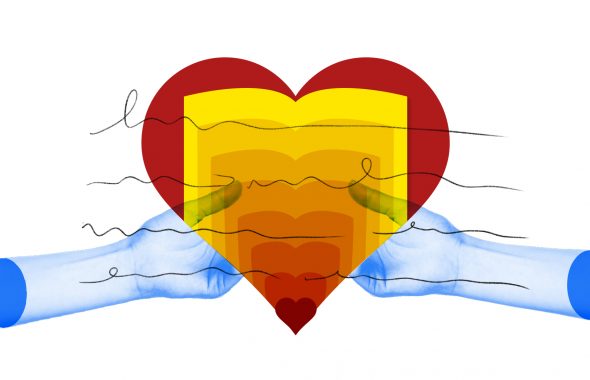Most people are familiar with the use of the term little people in reference to people who have dwarfism—people whose short stature is the result of a medical or genetic condition. But it’s not the only term.
In this article, we’ll note the range of terms and preferences and explain some of the notable reasons behind these preferences.
Content warning: The end of this article includes an explicit mention of an offensive slur. As part of our mission to educate about words and their impact on people, we believe it is important to include information about this word, especially since some people may be unaware that it is considered offensive.
What is dwarfism?
An important aspect of understanding dwarfism is understanding that dwarfism is a general term and doesn’t refer to one specific medical condition that causes short stature. Instead, the term is used to refer to shortness of stature that can be caused by many different medical or genetic conditions.
Generally, an adult is considered to have dwarfism if they have a height measured at 4 feet 10 inches or lower.
➡️ What causes dwarfism?
The most common cause of dwarfism is achondroplasia, a condition that impairs the growth of bones and causes an atypical skeletal structure, especially in the limbs. While this condition can be inherited, it is often caused by genetic mutations. This means that parents who do not have achondroplasia can have children who do, and parents who do have achondroplasia can have children who don’t.
What do people with dwarfism prefer to be called?
First, remember that discussing a condition or physical difference is in many cases unnecessary. Most of the time, the first thing you should ask a person is their name.
Of course, it is sometimes necessary and important to use generally identifying terms, such as when discussing accessibility in the workplace or a person’s membership in a community. And whenever such things are being discussed, it’s important to use the terms that people themselves prefer when referring to themselves and being referred to.
Because preferences vary widely, the best approach is always to ask. Preferences may also overlap—some people may use certain terms interchangeably or be OK with multiple terms.
Here are some of the most common and widely accepted terms.
dwarf and person with dwarfism
Some people with dwarfism prefer to be referred to—and to refer to themselves—with the standalone term dwarf. In contrast, some people prefer the term person with dwarfism, an example of what’s called person-first language, which is terminology that places the person before a mention of a specific characteristic (usually literally using the word person or the plural people as the first words in an identifying phrase). Preferring to be referred to as a dwarf is an example of what’s called identity-first language, which places emphasis on a characteristic that a person considers an inherent part of their identity.
Read more about identity-first and person-first language.
Both terms are considered catch-all terms that encompass all medical and genetic causes of dwarfism. Both versions are also commonly used in the medical community when discussing dwarfism.
While organizations within the community often use such terms in discussing their members and those they advocate for, such terms are not commonly used in names of such organizations (though there are exceptions).
It’s important to note that some people may not be comfortable using either term for a variety of reasons. One reason is that they may consider them as too technical outside of a medical context. Furthermore, some people may prefer to avoid the word dwarf’s associations with characters in folklore and pop culture (which in many cases have had the effect of demeaning people of short stature).
little person, little people
Out of all of the terms that refer to people with dwarfism, the straightforward little person (and its plural little people) is now likely the most common and the one most people are familiar with.
Around the world, many organizations focused on people with dwarfism use the term little people in their name and in their communications, including Little People of America, Little People UK, and Little People of British Columbia.
The increase in the awareness of this terminology is often attributed in part to the high visibility of such terms in notable aspects of pop culture, such as the title of the long-running TV series Little People, Big World.
Although such terms are now widely used and preferred, keep in mind that personal preferences vary.
person of short stature and short-statured person
Although less common, the terms person of short stature and short-statured person (sometimes unhyphenated as short statured) are also used (along with their plural forms that use people). Preferences around person-first or identity-first constructions also apply in this case.
These phrases are used by groups and organizations focused on little people, often interchangeably with previously mentioned options. They are sometimes also used in the names of such organizations, such as Short Statured People of Australia and Short Stature Scotland.
Which term should I use?
Remember that specifying whether or not a person has dwarfism is often completely unnecessary. See the person first—and don’t assume that their size defines them. Most of the time, the first thing you should ask a person is their name.
In cases when it’s important to identify someone as being short in stature in the ways we’ve discussed here, all of the terms we’ve listed can be suitable. Many are often used interchangeably. Little person and little people are the most common. But no preference is universal, so be sure to respect a person’s preferences.
Offensive terms
Although preferences vary around the terms that have been discussed thus far, there are some terms that should never be used. Notably, one term considered extremely offensive is the disparaging word midget. Like other slurs, its explicit mention is often avoided in discussions about the term by instead using the phrase the M word. (We feel it is important to explicitly state it here so as to leave no confusion about which word we’re referring to.)
Though the term once came to be used by some as a way to distinguish various forms of dwarfism, members of the community and advocacy organizations now note that its history is rooted in demeaning usage—and that it should be avoided altogether.
That push for avoidance and elimination of use also extends to contexts in which the term has traditionally been applied not to people but to things in reference to their small size (such as certain types of racing cars, as one example).
![List of words in outlined font, with central word in bold teal font, on light teal background: “dwarfism, dwarf, little people, little person [in bold], people of short stature, short statured people"](https://www.dictionary.com/e/wp-content/uploads/2022/05/20220510_littlePerson_1000x562-790x310.png)













